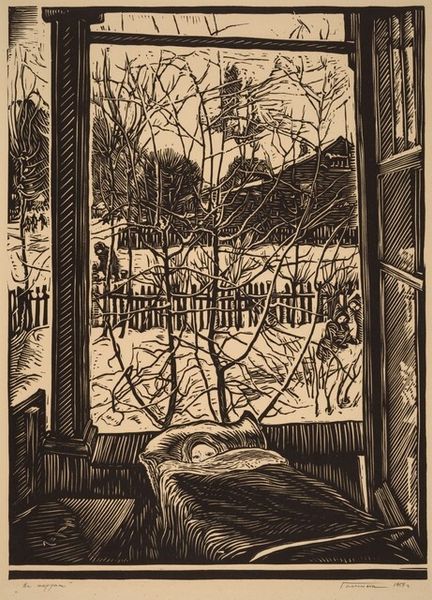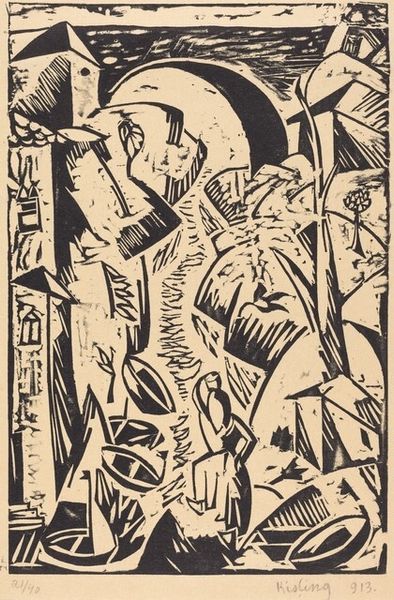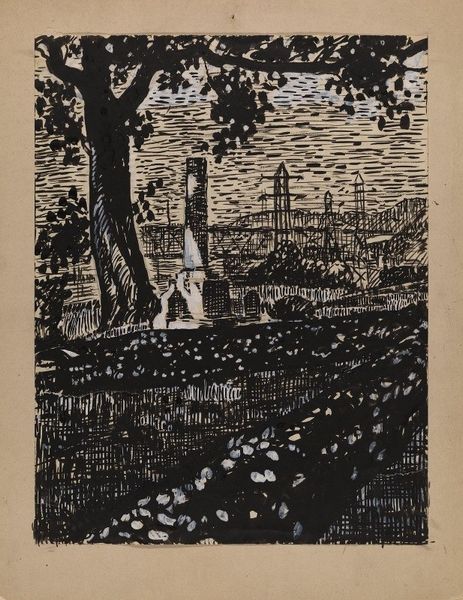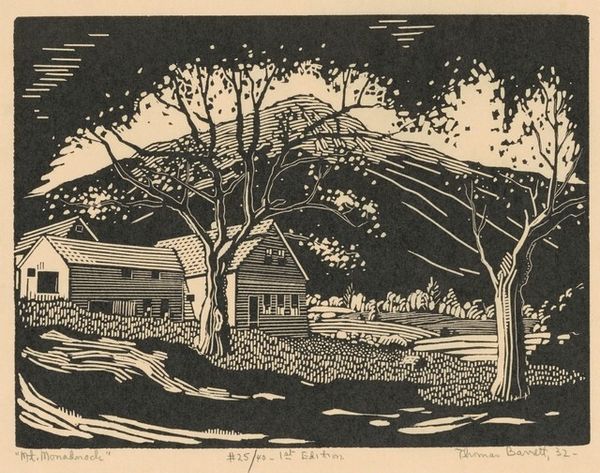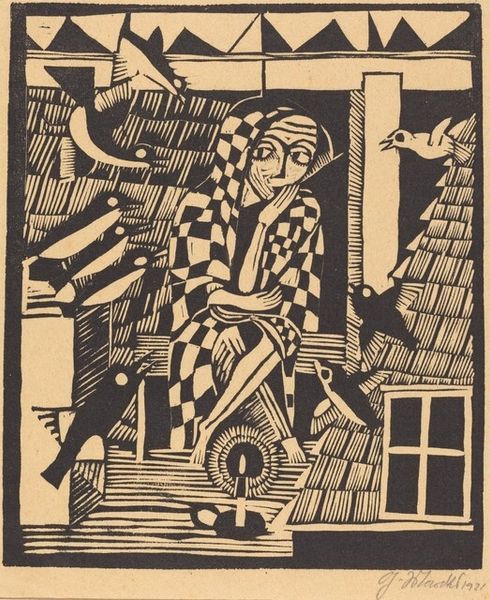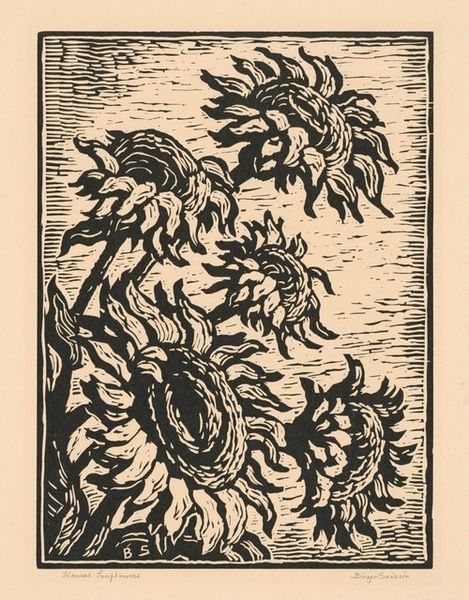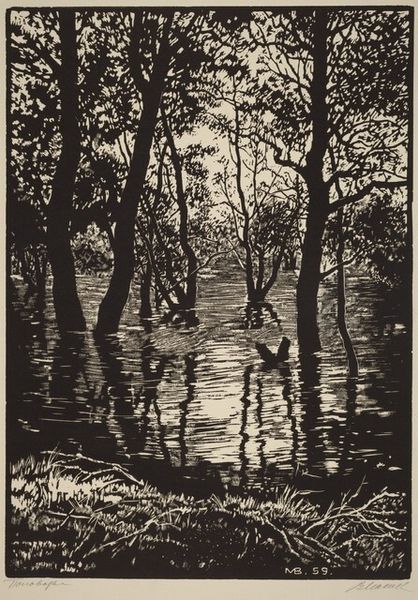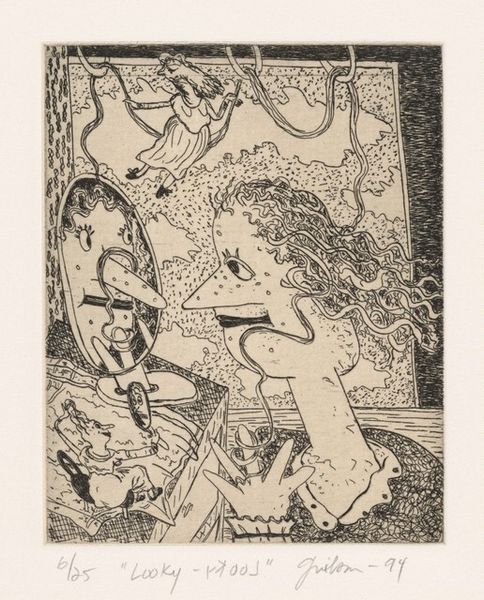
graphic-art, print, woodcut
#
graphic-art
#
ink drawing
#
pen drawing
# print
#
woodcut
#
cityscape
Copyright: National Gallery of Art: CC0 1.0
Editor: "All Around the Town" by Clarence E. Sherdon, made with woodcut printmaking. The stark contrast and simplified forms give it an almost graphic quality. I wonder, what elements jump out to you as significant? Curator: It's interesting to see Sherdon choose a mundane street corner. The very objects depicted – the mailbox, the trash can – speak to the role of art in democratizing imagery. This challenges the established hierarchies of what’s considered worthy of artistic representation. Do you think this elevates or diminishes the 'everyday'? Editor: That's an interesting point; perhaps a bit of both? Seeing these ordinary objects rendered artistically does highlight them, but the almost harsh quality of the woodcut also gives a critical edge. What does that bold contrast contribute, historically speaking? Curator: The woodcut, with its inherent graphic boldness, became popular among socially conscious artists during periods of rapid industrialization. Think about its accessibility: prints were inexpensive, easily reproducible. Did it serve to broaden the reach and societal impact of his statements? Editor: So it’s about making a statement accessible, bypassing the traditional art establishment? That does shift my perspective! Curator: Precisely! The choice of medium aligns perfectly with a potential aim to reach a broader public, commenting on the very fabric of daily urban existence. Editor: That’s fascinating. I’m walking away thinking differently about not just the art but its intended audience, too. Curator: Exactly. Art, after all, rarely exists in a vacuum. Thinking about *who* gets to see it and *where* changes how we interpret its message.
Comments
No comments
Be the first to comment and join the conversation on the ultimate creative platform.

